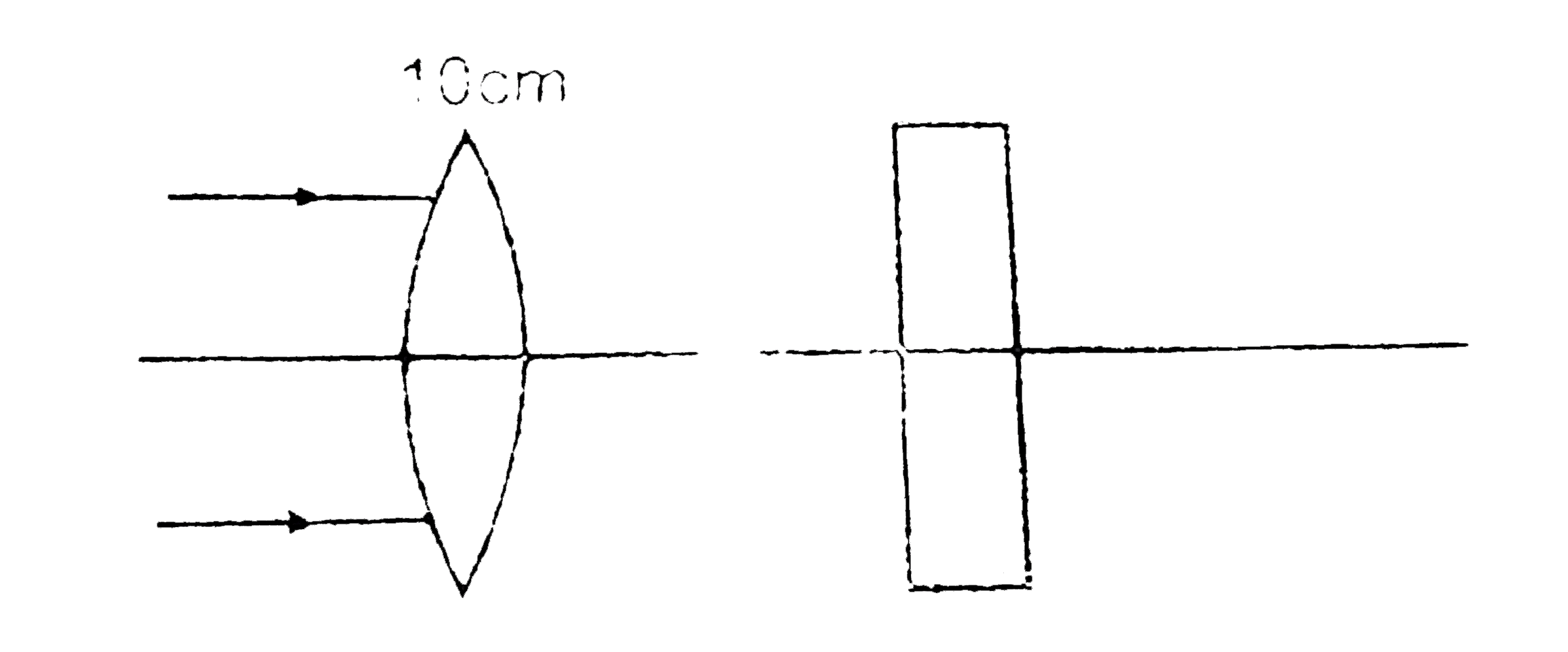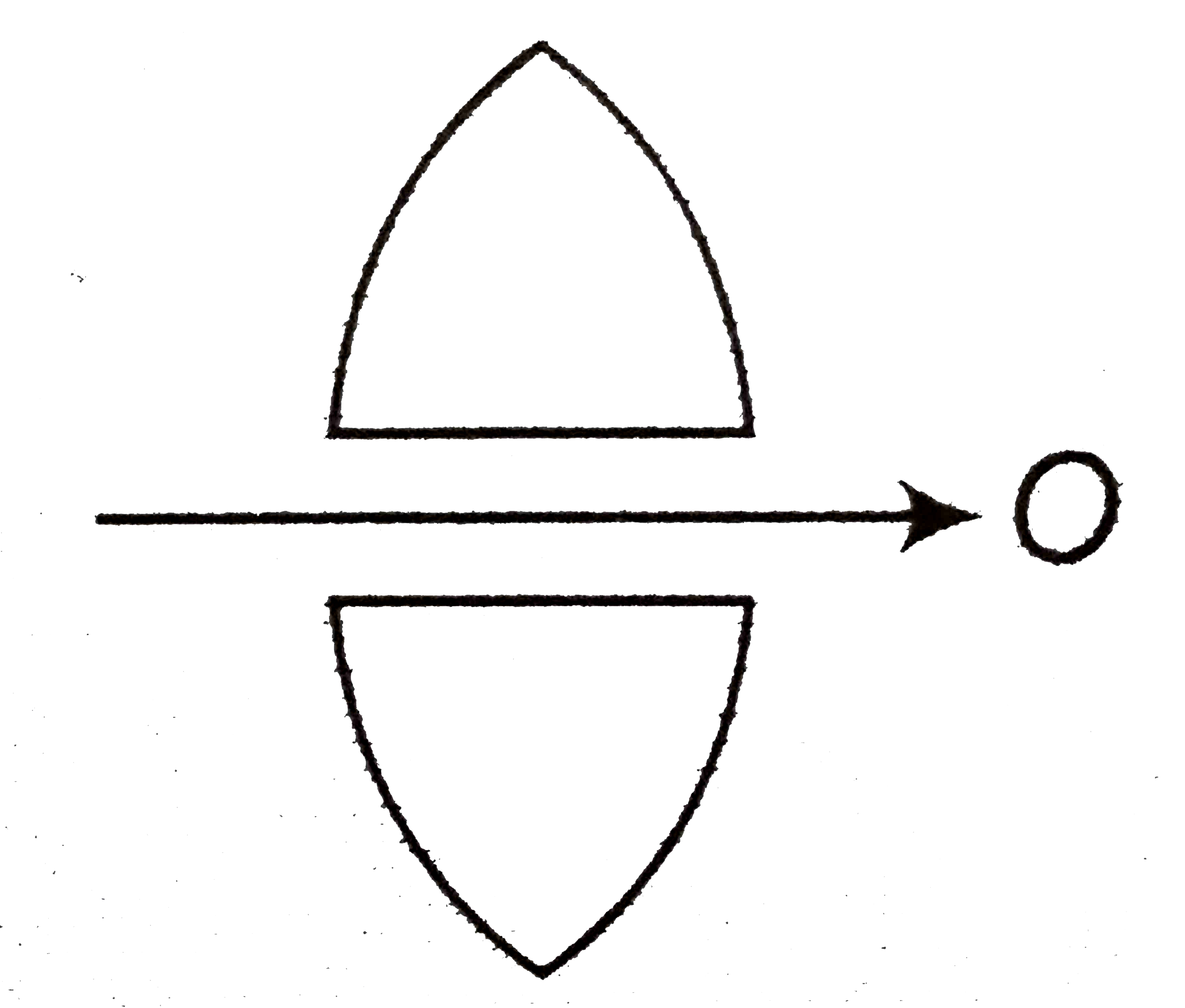A convergent beam of light passes through a diverging lens of focal length and comes to focus at a distance of behind the lens. Find the position of the point at which the beam would converge in the absence of the lens.
The correct Answer is:A
To solve the problem step by step, we will use the lens formula and the information provided.
Step 1: Identify the given values
- Focal length of the diverging lens (f) = -0.2 m (negative because it is a diverging lens)
- Image distance (v) = 0.3 m (behind the lens, hence positive)
Step 2: Write the lens formula
The lens formula is given by:
1f=1v−1u
where:
- f is the focal length of the lens,
- v is the image distance,
- u is the object distance (the distance of the object from the lens).
Step 3: Rearrange the lens formula to find u
Rearranging the formula gives us:
1u=1v−1f
Step 4: Substitute the known values into the formula
Substituting v=0.3m and f=−0.2m:
1u=10.3−1−0.2
Step 5: Calculate the right-hand side
Calculating each term:
10.3=103and1−0.2=−5
Thus,
1u=103+5
To combine these, convert 5 into a fraction with a common denominator:
5=153
So,
1u=103+153=253
Step 6: Solve for u
Now, take the reciprocal to find u:
u=325=0.12m
Conclusion
The position of the point at which the beam would converge in the absence of the lens is 0.12m in front of the lens.
---
- Focal length of the diverging lens (f) = -0.2 m (negative because it is a diverging lens)
- Image distance (v) = 0.3 m (behind the lens, hence positive)
The lens formula is given by:
1f=1v−1u
where:
- f is the focal length of the lens,
- v is the image distance,
- u is the object distance (the distance of the object from the lens).
Rearranging the formula gives us:
1u=1v−1f
Substituting v=0.3m and f=−0.2m:
1u=10.3−1−0.2
Calculating each term:
10.3=103and1−0.2=−5
Thus,
1u=103+5
To combine these, convert 5 into a fraction with a common denominator:
5=153
So,
1u=103+153=253
Now, take the reciprocal to find u:
u=325=0.12m
The position of the point at which the beam would converge in the absence of the lens is 0.12m in front of the lens.
Topper's Solved these Questions
- BOOK - NCERT FINGERTPS ENGLISHCHAPTER - RAY OPTICS AND OPTICAL INSTRUMENTSEXERCISE - Reflection Of Light By Spherical Mirrors5videos
RAY OPTICS AND OPTICAL INSTRUMENTS
- BOOK - NCERT FINGERTPS ENGLISHCHAPTER - RAY OPTICS AND OPTICAL INSTRUMENTSEXERCISE - Refraction10videos
RAY OPTICS AND OPTICAL INSTRUMENTS
- BOOK - NCERT FINGERTPS ENGLISHCHAPTER - RAY OPTICS AND OPTICAL INSTRUMENTSEXERCISE - ASSERTION AND REASON15videos
RAY OPTICS AND OPTICAL INSTRUMENTS
- BOOK - NCERT FINGERTPS ENGLISHCHAPTER - PRACTICE PAPPEREXERCISE - Practice Paper 350videos
PRACTICE PAPPER
- BOOK - NCERT FINGERTPS ENGLISHCHAPTER - SEMICONDUCTOR ELECTRONICS : MATERIALS , DEVICES AND SIMPLE CIRCUITS EXERCISE - Assertion And Reason15videos
SEMICONDUCTOR ELECTRONICS : MATERIALS , DEVICES AND SIMPLE CIRCUITS
Similar Questions
A converging beam of light is incident on a concave lens of focal length 20 cm. In the absence of the lens, the beam converges at a point 10 m behind the lens. Find where the beam will converge/diverge after refraction.
View SolutionA converging lens of focal length 40 cm is kept in contact with a diverging lens of focal length 30 cm. Find the focal length of the combination.
View SolutionA converging lens of focal length 5.0cm is placed in contact
with a diverging lens of focal length 10.0cm. Find the combined focal length of
the system.View SolutionA beam of light of wavelength 590 nm is focused by a converging lens of diameter 10.0 cm at a distance of 20 cm from it. find the diameter of the disc image formed.
View SolutionA point like object is placed at a distance of 1 m in front of a convex lens of focal length 0.5 m . A plane mirror is placed at a distance of 2 m behind the lens. The position and nature of the final image formed by the system is :
View SolutionAn object O is kept infront of a converging lens of focal length 30 cm behind which there is a plane mirror at 15 cm from the lens.
_E01_080_Q01.png) View Solution
View SolutionA parallel beam of light is incident on a lens of focal length 10 cm. A parallel slab of refractive index 1.5 and thickness 3 cm is placed on the other side of the lens. Find the distance of the final image from the lens.
 .View Solution
.View Solution
A point object is placed at a distance of 0.3 m from a convex lens (focal length 0.2 m) cut into two halves each of which is displaced by 0.0005 m as shown in the figure. Find the position of the image . If more than one image is formed find their number and the distance between them.View Solution
A point object is placed at a distance of 0.3 m from a convex lens (focal length 0.2 m) cut into two halves each of which is displaced by 0.0005 m as shown in the figure. Find the position of the image . If more than one image is formed find their number and the distance between them.View Solution
A point object is placed at a distance of 0.3 m from a convex lens (focal length 0.2 m) cut into two halves each of which is displaced by 0.0005 m as shown in the figure. Find the position of the image . If more than one image is formed find their number and the distance between them.View Solution

